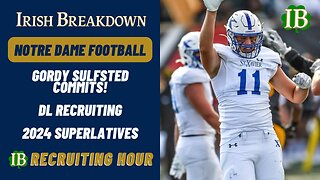Time to feed the Crocodiles
Time to feed the Crocodiles
Crocodiles (family Crocodylidae) or true crocodiles are large semiaquatic reptiles that live throughout the tropics in Africa, Asia, the Americas and Australia. The term crocodile is sometimes used even more loosely to include all extant members of the order Crocodilia, which includes the alligators and caimans (family Alligatoridae), the gharial and false gharial (family Gavialidae) among other extinct taxa
Crocodiles are ambush predators, waiting for fish or land animals to come close, then rushing out to attack. Crocodiles mostly eat fish, amphibians, crustaceans, molluscs, birds, reptiles, and mammals, and they occasionally cannibalize smaller crocodiles. What a crocodile eats varies greatly with species, size and age. From the mostly fish-eating species, like the slender-snouted and freshwater crocodiles, to the larger species like the Nile crocodile and the saltwater crocodile that prey on large mammals, such as buffalo, deer and wild boar, diet shows great diversity. Diet is also greatly affected by the size and age of the individual within the same species. All young crocodiles hunt mostly invertebrates and small fish, gradually moving on to larger prey. Being ectothermic (cold-blooded) predators, they have a very slow metabolism, so they can survive long periods without food. Despite their appearance of being slow, crocodiles have a very fast strike and are top predators in their environment, and various species have been observed attacking and killing other predators such as sharks and big cats. Crocodiles are also known to be aggressive scavengers who feed upon carrion and steal from other predators.Evidence suggests that crocodiles also feed upon fruits, based on the discovery of seeds in stools and stomachs from many subjects as well as accounts of them feeding.
Crocodiles have the most acidic stomach of any vertebrate. They can easily digest bones, hooves and horns. The BBC TV reported that a Nile crocodile that has lurked a long time underwater to catch prey builds up a large oxygen debt. When it has caught and eaten that prey, it closes its right aortic arch and uses its left aortic arch to flush blood loaded with carbon dioxide from its muscles directly to its stomach; the resulting excess acidity in its blood supply makes it much easier for the stomach lining to secrete more stomach acid to quickly dissolve bulks of swallowed prey flesh and bone. Many large crocodilians swallow stones (called gastroliths or stomach stones), which may act as ballast to balance their bodies or assist in crushing food, similar to grit ingested by birds. Herodotus claimed that Nile crocodiles had a symbiotic relationship with certain birds, such as the Egyptian plover, which enter the crocodile's mouth and pick leeches feeding on the crocodile's blood; with no evidence of this interaction actually occurring in any crocodile species, it is most likely mythical or allegorical fiction.
Enjoy the video? More Animal Videos Here
https://rumble.com/playlists/LfbbQ3K-V2c
-
 LIVE
LIVE
IrishBreakdown
2 hours agoNotre Dame Recruiting Hour: Gordy Sulfsted Commits, DL Recruiting Talk
393 watching -

OFFICIAL Jovan Hutton Pulitzer Rumble
2 hours agoLooking Back On Lockdowns and Disruptions In Our Supply Chain and Lives
13.6K5 -
 LIVE
LIVE
Major League Fishing
4 days agoLIVE Bass Pro Tour, Heavy Hitters, Day 3
536 watching -
 2:57:43
2:57:43
The Shannon Joy Show
8 hours ago🔥LIVE W/Sasha Latypova! Commissioned By Pentagon-COVID Was An Inside Job & The Shots Are Bioweapons
20.2K20 -
 2:55:20
2:55:20
The Charlie Kirk Show
3 hours agoWhy the Vax is Back + Debate Prep + Cohen Robs Trump | Davis, Hassam-Nahoum, MacArthur | LIVE
70.3K47 -
 1:20:38
1:20:38
vivafrei
4 hours agoMichael Cohen STOLE from Trump! Liberal Gaslighters! Butker's Graduation Speech & MORE!
43.6K40 -
 1:02:22
1:02:22
The Dan Bongino Show
6 hours agoThe Dem's Secret Plot To Dump Biden (Ep. 2253) - 05/20/2024
411K1.16K -
 1:22:01
1:22:01
Benny Johnson
4 hours agoIT'S OVER: Trump Trial BOMBSHELL, Star Witness Admits He STOLE From Trump! Iran's President DEAD 🚨
59.8K153 -
 59:04
59:04
Steven Crowder
6 hours agoIran's President Dead in Helicopter Crash: Everything You Need to Know
263K450 -
 45:11
45:11
Rethinking the Dollar
5 hours agoGold Surges 23% in 3 Months! Outperforming S&P 500
31.9K11